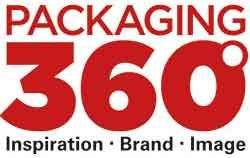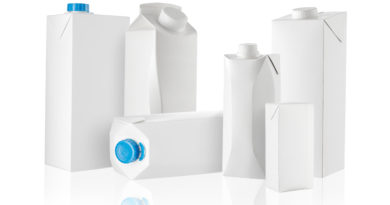Sweets in sustainable packaging
Confectionery packaging should appeal emotionally through unusual designs and colours and preferably ensure long shelf life with consistent quality and freshness. But sustainability is also gaining in importance in this food sector.
No other food sector puts more creativity, design work and colour into the design of packaging than the confectionery industry. It is supposed to appeal to consumers above all emotionally. At the same time, the new packaging law and the changed consumer demands have also led manufacturers of confectionery, permanent pastries and ice cream to place the sustainability of their packaging on the agenda.
Nestlé
For example, Nestlé, whose Confectionery division ranks the Group third in terms of sales among the global players in the confectionery industry, established its own Packaging Research Institute in December 2018 to accelerate its sustainability agenda. Since then, the Nestlé Institute of Packaging Sciences has been dedicated to researching and developing functional, safe and environmentally friendly packaging.
Specifically, the Institute will evaluate the safety and functionality of various sustainable packaging materials. The research area includes recyclable, biodegradable or compostable polymers, functional paper and new packaging concepts and technologies to improve the recyclability of plastic packaging. The reason for this is that the company has set itself the goal of making all packaging recyclable or reusable by 2025.
Lindt & Sprüngli
At Chocoladefabriken Lindt & Sprüngli AG, according to its Sustainability Report 2018, packaging material plays an important role in the production chain because chocolate is an extremely sensitive and delicate product. Although the packaging must be attractive to the consumer and provide information about the ingredients, its main task is to protect the sensitive chocolate.
Nevertheless, Lindt & Sprüngli works purposefully with packaging manufacturers who are increasingly concerned with sustainability along the entire supply chain. „We take the sustainability performance of our suppliers into account in our procurement decisions,“ it says, „The majority of our packaging manufacturers rely on modern production technologies that reduce the use of inks and materials in particular. Our in-house sustainability experts regularly visit our suppliers on site to monitor the process.
ADVERTISEMENT
 FachPack presents solutions on the subject to the confectionary industry – throughout the entire packaging process chain and everything associated with it, from materials to function and design to logistics and tracking. More information can be found here.
FachPack presents solutions on the subject to the confectionary industry – throughout the entire packaging process chain and everything associated with it, from materials to function and design to logistics and tracking. More information can be found here.Ferrero
Ferrero S.p.A. also points out the importance of sustainable packaging in its current Corporate Social Responsibility Report: „We apply the so-called ‚5R strategy‘ in the development and planning of our packaging“. 5R stands for „Reuse“ (use of materials from renewable sources), „Recycle“ (use of recycled materials), „Reuse“ (development of recyclable solutions), „Remove“ (reduction of packaging elements) and „Reduce“ (material reduction). The aim of the strategy is to ensure the best possible quality and freshness while keeping the amount of waste as low as possible.
Ferrero mentions concrete examples in the CSR Report: By reducing the thickness of aluminium foil at Santa Claus with sleds at the Polish plant, for example, 25 tonnes of aluminium were saved last year. 107 tonnes of plastic are saved annually by reducing the weight of Estathé’s recyclable PET bottle and glass was used as part of the chocolate packaging for the Christmas campaign in France, Italy and Germany so that consumers could reuse it as trays.
Bahlsen
Even before the new Packaging Act came into force, the reduction of packaging materials was an issue at Bahlsen. In addition, the company regularly checks alternative packaging materials. „Food safety and the quality of our products are our primary objectives. This applies both to the manufacturing process and to the choice of packaging. At present, our packaging components, which consist exclusively of cardboard and paper, are already 100 percent recyclable, and our plastic-based packaging 98 percent.“ By 2025 Bahlsen also wants to achieve 100% recyclability here.
Storck
The situation at August Storck KG is somewhat different. They replied to our enquiry: „Storck was involved in the founding of the central office from the very beginning, so that nothing surprising arose for us as a result of the Packaging Act. The new requirements are no problem for us and the packaging that has always been licensed under a dual collection system. Nor does the Packaging Act give us any reason to make changes to our packaging.“




